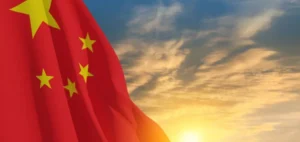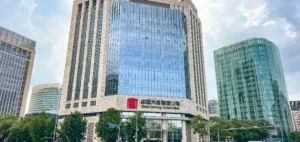Natural hydrogen, also known as white hydrogen, previously considered marginal, is now emerging as a major strategic resource within the global energy context marked by energy transition and geopolitical tensions. Recent confirmation of hydrogen reserves in France, supported by preliminary estimates published by the French Institute of Petroleum and New Energies (IFPEN) in collaboration with the French Geological Survey (BRGM), radically changes the game and generates growing interest among industrial and financial players.
Massive reserves: Emergence of major energy hubs
According to an official report presented by the French Ministry of Economy and Industry in June 2025, Lorraine, particularly the coal basin of Folschviller, has an estimated natural hydrogen potential of approximately 46 million tons. This massive volume represents roughly half of the current global annual hydrogen production, estimated at around 95 million tons per year, over 95% of which is derived from fossil fuels (natural gas, oil, coal).
The potential identified at Folschviller by CNRS and the University of Lorraine is particularly significant due to its accessible depth, between 600 and 1,100 meters, with hydrogen concentrations estimated between 6% and 15%. An extrapolation to a depth of 3,000 meters places the total estimate at 46 million tons, positioning Lorraine at the heart of a major energy issue for decades to come (source: IFPEN, 2024).
Additionally, the Aquitaine Basin and the Pyrenean foothills have also been identified as having significant potential. TBH2 Aquitaine already holds an exclusive exploration permit (Sauve Terre H₂) in a promising zone within the Pyrénées-Atlantiques, where the first seismic campaigns are currently underway. The company 45-8 Energy, in partnership with Storengy (an ENGIE subsidiary), holds two permits covering 266 km² in the Pyrenees and 691 km² in the Landes, where comprehensive geophysical studies are also being conducted (source: Académie des Sciences, 2024).
Beyond these initially mentioned regions, other French territories are also emerging in ongoing studies. In Auvergne-Rhône-Alpes, Sudmine is currently exploring a 5.9 km² area in Puy-de-Dôme, where preliminary data also indicate significant potential, further reinforcing the hypothesis of even larger resources yet to be confirmed.
European context: Competition or energy cooperation?
France is not alone in exploring natural hydrogen in Europe. Other countries such as Spain, Italy, and Germany are also initiating similar exploration programs. Spain began preliminary studies in 2024 in the region of Castile-and-León, while Germany relies on industrial players like Storengy to assess potential resources, although definitive figures have not yet been published. In Italy, exploratory works are also underway in the Apennines, although the results have not yet been officially communicated (source: Carnot M.I.N.E.S., 2024).
This European dynamic fits into the broader context of the European Commission’s REPowerEU plan, which explicitly identifies natural hydrogen as a potential key resource to diversify Europe’s energy mix and secure long-term energy supplies in the face of geopolitical instability associated with fossil fuels.
Economic viability: Competitive costs but significant technical challenges
Early economic analyses presented by the French Academy of Sciences (2024) estimate extraction costs of natural hydrogen between €1 and €2/kg, compared to €4 to €8/kg for green hydrogen produced via water electrolysis. These estimates position natural hydrogen below the cost of grey hydrogen currently derived from natural gas (€1.5 to €2/kg). However, these costs depend on precise results from initial exploratory drillings planned for 2026 and mastery of infrastructure costs related to storage and transportation.
Indeed, technical management of natural hydrogen presents several complex challenges, notably related to its extreme volatility, low molecular weight, capture difficulty, and specialized infrastructure needed for underground storage. These factors imply significant upfront investments. For instance, TBH2 Aquitaine estimates several hundred million euros required for initial exploration and industrial capture phases (source: Carnot M.I.N.E.S., 2024).
Environment and social acceptability: Risks under close scrutiny
Although natural hydrogen is promoted as a “clean” energy that does not generate CO₂ upon direct extraction, the actual environmental impact remains to be precisely assessed, particularly concerning leakage risks potentially affecting underground water resources. Moreover, the necessity of deep drilling and specialized infrastructure may raise local concerns regarding groundwater quality, environmental security, and social acceptability.
The French regulatory framework, updated in 2022, already stipulates strict requirements concerning environmental impact studies and public consultations for any industrial natural hydrogen project. Although no structured opposition movement has emerged so far, transparency and public education regarding these projects remain essential conditions for their long-term success.
Conclusion and strategic perspectives: A revolution underway?
The official confirmation of significant natural hydrogen reserves in France places the country in front of a historic opportunity in terms of energy, economy, and geopolitics. According to the most optimistic estimates by IFPEN, natural hydrogen could represent between 15% and 20% of France’s domestic energy consumption by 2040, significantly strengthening France’s energy sovereignty and positioning the country as a key player in redefining the European energy landscape.
However, achieving this potential will require major investments, close coordination between public authorities and private players, and rigorous management of identified technical and environmental challenges. Initial drilling results planned for late 2026 will largely determine the trajectory of this promising but still largely unrealized industry.
Sources :
1. Rapport IFPEN-BRGM (2025) sur l’hydrogène natif en France
2. Carnot M.I.N.E.S. Livre Blanc “Produire, Stocker et utiliser l’Hydrogène” (2024)
3. Académie des Sciences, rapport “L’hydrogène aujourd’hui et demain” (2024)
4. Kamara (2024), stratégies d’utilisation du biohydrogène
5. Signoret (2024), Université de Franche-Comté, analyse stratégique de l’hydrogène natif
6. Rapport du ministère français de l’Économie et de l’Industrie (2025), perspectives nationales sur l’hydrogène natif
7. Commission Européenne, Plan REPowerEU (2024)






















